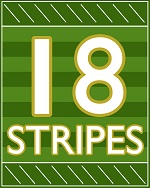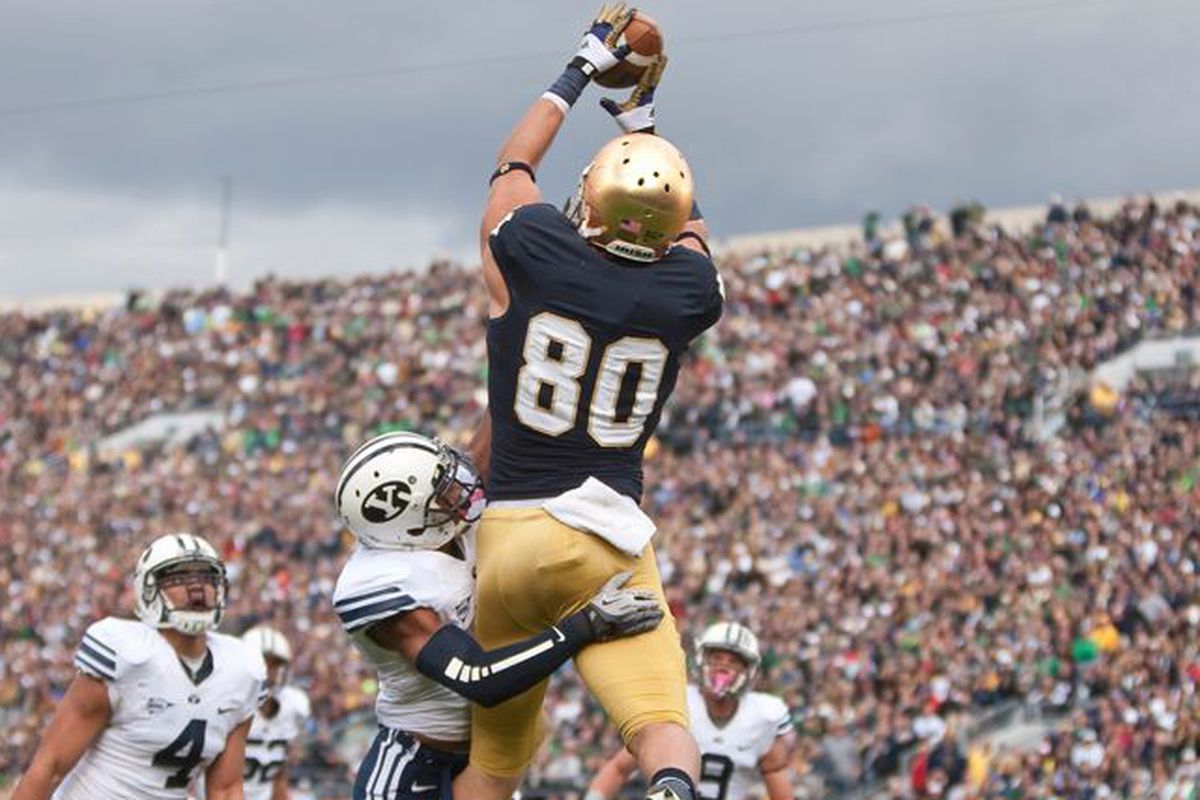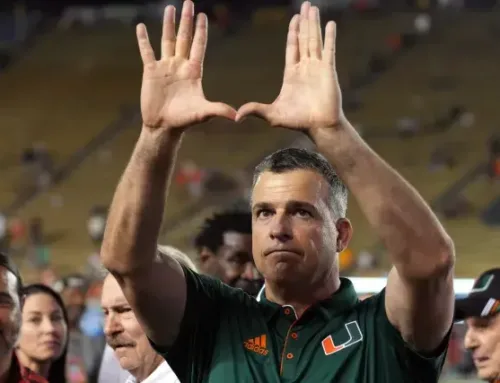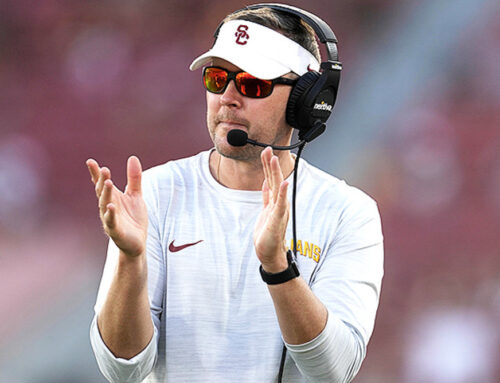I created a primer to this project which explains the way we’ll be ranking all 185 players. It will be a pyramid structure and as we ascend the players will get better and better. Follow along this off-season as we preach about all the wonderful talent that has played for Notre Dame.
Level 1, Wing 1
Level 1, Wing 2
Level 1, Wing 3
Level 2, Wing 1
Level 2, Wing 2
Level 2, Wing 3
Today, we begin the 3rd level and climb the pyramid once again.
ICONS
National Champion
Consensus or Unanimous All-American
Major CFB Award
77. Ray Eichenlaub, FB, Columbus, Ohio (1911-14)
A four-year starter at fullback who didn’t lose a game through his first 3 years on campus. Eichenlaub was the tough runner who allowed Notre Dame to set up its early century passing attack that would make the school famous. In 1913, he scored an amazing 12 touchdowns and picked up All-American honors. Eichenlaub is a member of the College Football Hall of Fame inducted in 1972.
76. Bert Metzger, OG, Chicago, Illinois (1928-30)
Metzger famously weighed just 149 pounds but had the tenacity to start on Knute Rockne’s teams. He won 2 championships on Rockne’s last two teams and was an All-American for his senior 1930 season. Metzger was inducted into the College Football Hall of Fame in 1982.
75. Eddie Anderson, E, Mason City, Iowa (1918-21)
One of the early top pass catchers in Notre Dame history. Anderson caught 3 touchdowns in a game–a record that wasn’t tied for 30 years and then broken 85 years later. He recorded an astonishing 687 receiving yards over his last 2 seasons while being awarded consensus All-American honors after 1921.
74. Jeff Faine, C, Sanford, Florida (1999-2002)
A tough leader on the offensive line and one of the top players from the late Davie and early Willingham eras. Faine started at center for 3 seasons and was awarded first-team All-American honors from a couple services but just missed out on consensus honors for 2002. He left with a year of eligibility remaining before moving on to the NFL.
73. Dick Arrington, OG, Erie, Pennsylvania (1963-65)
One of the best two-way players on the first two Parseghian teams. Arrington was a stout 5’11” 230 pounds and helped block for the blossoming offenses in 1964 and 1965. He was awarded unanimous All-American honors after his senior season.
72. Harry Stuhldreher, QB, Massillon, Ohio (1922-24)
The quarterback of the famous Four Horsemen. Stuhldreher didn’t score as many touchdowns as his teammates (22 for his career) but he was an effective field general for an offense that spread the ball to many different playmakers. He was also the primary punt returner for the team (701 career punt return yards) which is 5th most in school history. A consensus All-American after Notre Dame’s first National Championship season in 1924, Stuhldreher was later inducted into the College Football Hall of Fame in 1958.
71. Mike McGlinchey, OT, Philadelphia, Pennsylvania (2013-17)
A two-time captain, McGlinchey made his first career start in the bowl game to end 2014 and finished his career with 39 straight starts for the Irish. He developed fully once he made the switch from right to left tackle in 2016 and picked up some All-American honors as a senior. McGlinchey returned for his 5th-year and it paid off while he was awarded consensus All-American honors.
70. Jack Cannon, OG, Columbus, Ohio (1927-29)
Noted as the last Notre Dame star to not wear a helmet during play on the field. Cannon was the apprentice to Clipper Smith at guard and became an even better player when given the opportunity. He was captain of the 1929 National Championship team and was awarded consensus All-American honors following his senior year. In 1965, Cannon was inducted into the College Football Hall of Fame.
69. Joe Montana, QB, Carroll, Pennsylvania (1974-78)
Montana is a curious case because he played in an era of modest passing and his numbers do not justify the excellence from his NFL career. He played briefly as a sophomore establishing a penchant for comebacks, sat out 1976 with a shoulder injury, and eventually led the Irish on an unbeaten run to the championship in 1977 after winning the job in week four.
When he left Notre Dame, Montana was 2nd all-time in yards per game and 7th in winning percentage for a starting quarterback. He is now 9th and tied for 8th in those categories today.
68. Victor Abriami, DE, Baltimore, Maryland (2003-06)
Considered the heart of the first two Weis-era defenses. Abriami largely came out of nowhere as an upperclassman to become one of the most productive defensive ends in the country. He holds a tie for the most sacks ever in a game with four and his 10.5 sacks is the 3rd most in a season. For his career, Abriami is tied for 3rd all-time in sacks and tied for 5th in tackles for loss.
67. Jack Snow, WR, Long Beach, California (1962-64)
A lightly used end (receiver) for most of his career, Snow exploded on to the scene as a senior in a way that has hardly been replicated to this day. He was Notre Dame’s first 100-yard and 200-yard receiver in a single game and his 217 yards in the ’64 opener was a school record. Additionally, his 60 catches and 1,114 yards were also school records at the time, finishing 2nd in the country in receptions for 1964. A consensus All-American after his senior year, Snow also finished 5th in the Heisman voting in a year his teammate won the award.
66. Jim Crowley, RB, Green Bay, Wisconsin (1922-24)
As part of the Four Horsemen backfield, Crowley did a little bit of it all. He was a top-notch runner, threw the ball as much as the quarterback, picked off 6 passes, occasionally returned kicks, and kicked PAT’s, as well. After his senior season he was awarded consensus All-American honors following Notre Dame’s first National Championship. In 1924, Crowley totaled 1,240 yards from scrimmage more than anyone else on the team. He was inducted into the College Football Hall of Fame in 1966.
65. Allen Pinkett, RB, Sterling, Virginia (1982-85)
Pinkett is tied for the most carries in a game, 2nd most attempts in a season, and still the Notre Dame record holder for attempts in a career. His 1,394 yards in 1983 is the 3rd most in a season. When Pinkett left South Bend he was Notre Dame’s career rushing record holder and is currently 2nd all-time. His 96.1 yards per game is the most for any Irish back over their career. Pinkett finished 8th in the 1985 Heisman race and is Notre Dame’s all-time touchdown leader with 53 scores.
64. Tyler Eifert, TE, Fort Wayne, Indiana (2009-12)
Eifert’s career was nearly ended following a back injury as a freshman before he grew into one of the game’s best tight ends. As a sophomore he put up respectable numbers and then totaled 113 receptions in his junior and senior seasons. His 63 receptions in 2011 are the most ever in a season from a Notre Dame tight end. He’s 8th all-time in receptions regardless of position and Notre Dame’s all-time leader in catches by a tight end. Despite never being awarded consensus All-American honors, Eifert won the Mackey Award as the country’s top tight end.
63. Clarence Ellis, CB, Grand Rapids, Michigan (1969-71)
Perhaps the top corner of the Parseghian era, Ellis started for 3 years and up until recently was Notre Dame’s all-time leader in passes broken up. He also picked off 13 passes over his career which is tied for 3rd most by an Irish player. Ellis picked up some All-American honors as a junior and was awarded consensus All-American status following his senior season.
62. Jerome Bettis, RB, Detroit Michigan (1990-92)
A bruising tailback/fullback hybrid with deceptive quickness and speed. Bettis played sparingly in 1990 and then became a dominant force over his last 2 seasons in South Bend. He scored 16 rushing touchdowns in 1991, one fewer than the school record and his 20 total touchdowns that season is the most ever by a Notre Dame player. Bettis won some All-American honors in 1991 and left early for the NFL after 1992.
61. Michael Floyd, WR, Saint-Paul, Minnesota (2008-11)
Floyd missed 8 games over his career due to injury and still re-wrote the Irish records books. His 100 receptions in 2011 are the most ever in a season and his career 85.7 yards per game is also 1st in Notre Dame history. Floyd has the most 100-yard receiving games for a career and has a healthy lead for most receptions and receiving yards in Irish history. His 37 touchdown receptions also leads the program record books. Somehow, Floyd never came close to much All-American honors.





Floyd is the best statistical WR by per game, per season, and per career. 61 is too low.
He also averaged 22 yds per punt return!
His peak wasn’t as high as say Rocket or Tate (peakiest of peaks), and he didn’t get the national recognition of Brown, but he was an absolute stud from the moment he stepped on campus and maintained that his entire career.
I will take 4 years of the second best player over 2 years of the best every single time (Floyd vs Tate).
That’s fair. On the other side, he was injured quite a bit early in his career which lessens the 4 years impact but that’s a strong case for him obviously. I’m not sure the leadership was really there and the big moments & classic big games just aren’t there due to his era. Best case I’d make for him is he never had a really good quarterback situation except 2009 and he missed half the season.
I personally have a hard time ranking him higher either overall or among the wideouts.
Even with his injuries, I’d still take his career over the career of any other WR, and it isn’t even remotely close. He was SO statistically dominant over his career. I feel like you acknowledge that he was 1st in these things, but not how far and away he is in first in every receiving category.
Floyd has 900 more yards than 2nd place Tate, 7 more TDs than Fuller, and 90 more catches than TJ Jones. The difference between him and the second place for each category is basically the season where Tim Brown won the Heisman.
This doesn’t necessarily mean I’d take him as a player first if we are building a team, but I feel like the fact he had the clear best statistical career of any WR by a huge margin (and I’d say third best stats of any skill position player) earns him a top 50 spot at least.
Oh to have had one more year of him, Tate, and Clausen. Wooo baby. Losing Clausen really killed Floyd’s yds/catch.
You make great points! If Floyd is judged solely on his receiving stats and nothing else he should be rated higher. To counter…
Just using pure numbers isn’t fair really any to receiver pre-2005 when most seasons Notre Dame had an ancient passing game. It’s much tougher to compare a wideout from 1973 to 2011.
His YPA nose-dived for 2010-11 once a couple other players weren’t on the offense anymore. The career numbers certainly are impressive but those last 2 years were definitely different. Arguably, a lot of that isn’t on him alone.
He’s still in exclusive company at his position but most of the other wide receivers were more versatile at their peak than Floyd.
Floyd never made a Biletnikoff finalist, wasn’t a consensus All-American, and as far as I can tell was never named to an All-American team ever. I don’t like the AA lists as a be-all-end-all but that’s something to compare to his contemporaries.
I’m not sure his peak was really super high as a player when compared to some other legends. We’re talking rarefied air here. Statistically, he was at his best in 2009 as not the best WR on the team, he was hurt, and 30% of his production came in the opener.
His sophomore 7 games was probably his peak. The per game numbers are probably the second best season ever, behind Tate that same season.
You talk about his era, but I bet there are some RBs who greatly benefit from the era they played in. Pinkett and Denson had over 900 offensive touches. That’s an era thing (style of game, coaching, and supporting cast), and I hope they are both in the top 50, but not necessarily ahead of Josh Adams.
Regarding all-american. In 2010, he had 1 more catch, 3 more TDs, and 108 fewer yds than Julio Jones, All-American, in 1 fewer game. So once again, I would take Michael Floyd’s 2010 over an all-american season.
I can’t even imagine how hard it is to rank basically every player in ND history. Especially comparing ancient OL to modern day skill position. And I see this all over the place in people trying to determine the “best” player at anything. That’s why I generally haven’t commented on rankings that seemed off to me. That, and because I don’t know who half the players are. But this is more philosophical.
I value actual production over everything else. And longevity absolutely plays a factor for me, because longevity causes increased production. And that is a hill I will die on.
Pinkett is in this pyramid level and Denson was at No. 98 overall.
I do find total production weird to judge especially because some of the older players could only play 3 years max and some of the very best ever only played 2 years. And guys leave early which hurts their career numbers, etc.
Well, clearly missed those guys, which is embarrassing since Pinkett is even in this exact article. BTW, he still has the all time yds from scrimmage record. I would argue they should be higher, but never saw them play so ¯\_(ツ)_/¯
Why Pinkett over Denson by so much? Denson has a much better ypc. I don’t know much about either as a player, but seems like they would be very close in these rankings.
This whole exercise is so hard to do. You have to take into account how good someone was, who is deserving, how they compared to their own time, and how they compare to others at ND. Glad I’m not doing it. Can’t wait to see where TFR ranks.
Agree to disagree on MMFF
Yeah, look at who was throwing to Floyd. Mostly noodle armed Tommy Rees. I still remember the bowl game against Florida State, where our one passing TD was Floyd going up and ripping a horribly thrown ball away from the DB. I shudder to think how bad Rees would have been had he not throwing to the likes of Floyd and Eifert.
Imagine Floyd’s career if it’s the early 60’s and he has the Tommy Rees of that era and it’s 200 pass attempts a year instead of nearly 500.
Wow – I was a contemporary (and a dormmate!) of Abiamiri, but, um, I definitely did not think of him as this level of an all-timer. Interesting! I would not consider him and Eifert or Floyd to be similar-caliber players, and I definitely think Julian Love, for example, had a much better career than Abiamiri.
Starting to get to some legends! Gotta admit I wasn’t expecting to see Montana or Bettis here but it makes sense by the numbers and all. Personality and future careers definitely push them along way to the top of the mountain.
I’m with Hooks. I definitely thought Bettie and Montana would be higher. But I’m probably mixing up their college careers with their pro careers.
I feel like Montana will always be a lightning rod. Some people don’t have him anywhere near the Top 100 and others (probably using his pro career) have him near the Top 10.
Of course, he’s properly rated here. 🙂
Well, everybody has their blind spots.
This is such a tough task. I really am not second guessing these rankings. I think the opinions are legit. But from my perspective, Bettis should be higher. Mostly because of how he stood out against his contemporaries. He had to compete for carries with Ricky Watters, Rodney Culver, Reggie/Tony Brooks, Rocket… wow. He is legitimately one of the most explosive and prolific FBs who ever played. Such a freakish athlete. If I were compiling this list, which I am glad I am not, Bettis would be ahead of everyone on this list so far…
As for Montana, he had some incredible comebacks at ND, and is legendary for the chicken soup game… which maybe should count for a few extra points. But for his career, this feels about right.
He’s probably the biggest offensive freak in school history.
I admire what you’re doing here, Eric, it’s very difficult and given different eras, coaches, systems, teammates, competition it becomes pretty subjective, even when going by the quantitative stats and awards.
For my money I would take Montana over any player ever at ND, followed by Rocket and Bettis. Re Montana, I was always amazed at how Devine under-valued him throughout his ND career, and Walsh did the same thing with the 49ers.
I’m curious to see where you would put a Daryl Lamonica, if at all, in the pyramid. He was our starting QB for 3 years, ‘60-‘62, under Joe Kuharich, one of our worst coaches ever and on some of our worst teams. Sadly, I was a student then. Lamonica ended up being pretty successful in the pros, but the numbers are so dramatically different for qbs these days that they aren’t really comparable.
I’m not lobbying one way or the other for him, just marveling at the mental gymnastics you put yourself through. 😉
He’s a tough one to judge. Most from that era believe he was very talented but so much losing, and only 1,716 total yards of offense over 30 games. Even his pro success didn’t come until he was nearly 30. He picked up one 3rd team All-American vote in 1962 from the AP, though!
He had a pretty great nickname too. I think the nickname came later though, right?
The Mad Bomber, well earned 😊